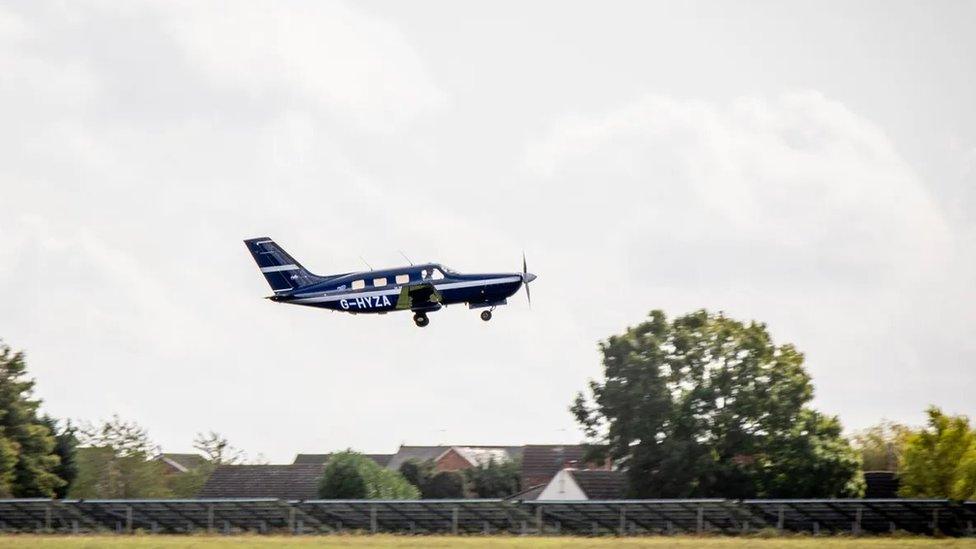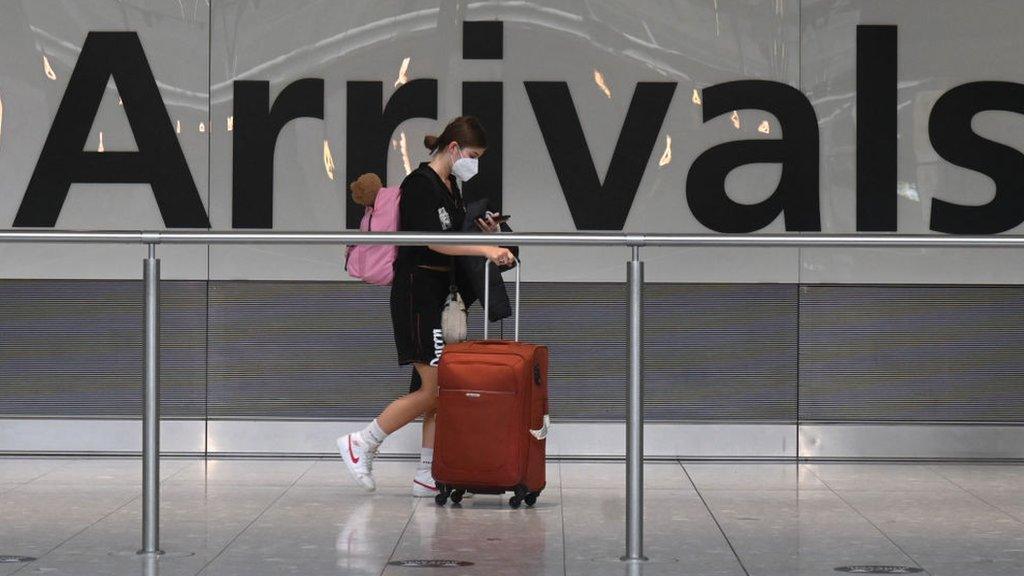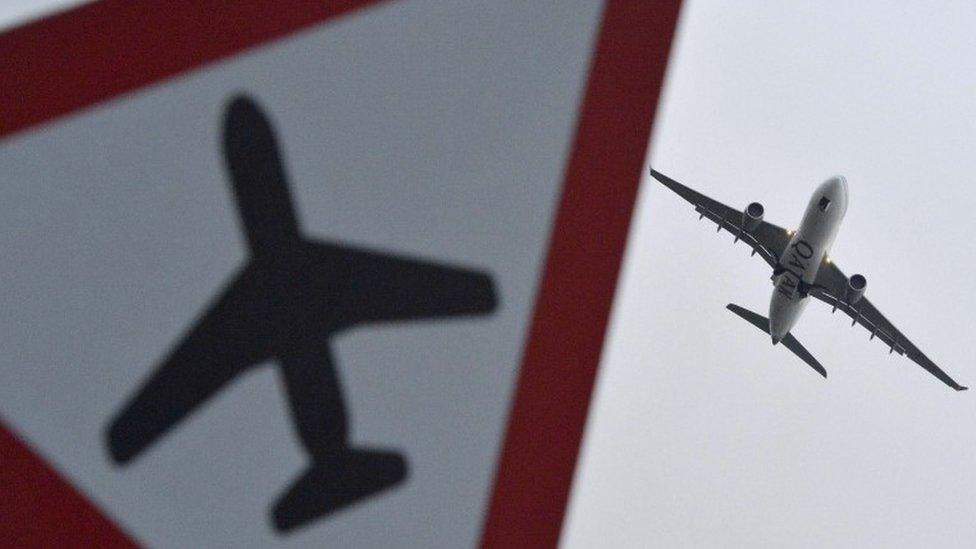Cotswold Airport aims to become carbon neutral
- Published

Solar panels will be installed at Cotswold Airfield from next year
A private airport is planning to use new low carbon solar technology to reduce its environmental impact.
Cotswold Airport, formerly known as RAF Kemble, is due to install organic thin-film solar (OPV) on top of its hangars in early 2022.
This would generate green hydrogen to power hydrogen-electric aircraft on the site, the airport said.
CEO Suzannah Harvey said it was a "significant step" on the airport's journey to decarbonise.
'Maximise clean energy'
She said the project was part of its ambition to "maximise the clean energy we generate on site and improve our energy efficiency".
The airport revealed on Monday it had signed an installation contract for 226kw with green energy firm Solivus.
This would be followed by further efforts to increase clean energy generated at the site and improve efficiencies, a spokesman said.
'Climate crisis'
It is understood to be the first airport in the world to use new technology to fly green aircraft developer ZeroAvia's hydrogen-electric aircraft whose engines sole emission is water.
Solivus CEO Jo Parker-Swift said using technology to decarbonise buildings was "central to combating the worsening climate crisis".
She added: "With this project we are excited to have the opportunity to decarbonise both aircraft hangars and air travel simultaneously."

HyFlyer I runs solely on hydrogen and only emits water
The base opened shortly before World War Two and was once home to the Red Arrows Aerobatics Team before eventually being sold off by the Ministry of Defence.
In April the 30,000-square foot facility became a base for aviation company ZeroAvia to develop the HyFlyer II, a hydrogen-electric powered aircraft that can carry up to 20 people.
It follows on from the six-seater HyFlyer I which is already operational.
The solar-generated electricity will be used to produce green hydrogen in ZeroAvia's on-site electrolyser, which will then fuel the company's aircraft for test flights.
The remainder will be used by the company to power its operations.
- Published7 June 2021

- Published14 July 2021

- Published1 April 2021
